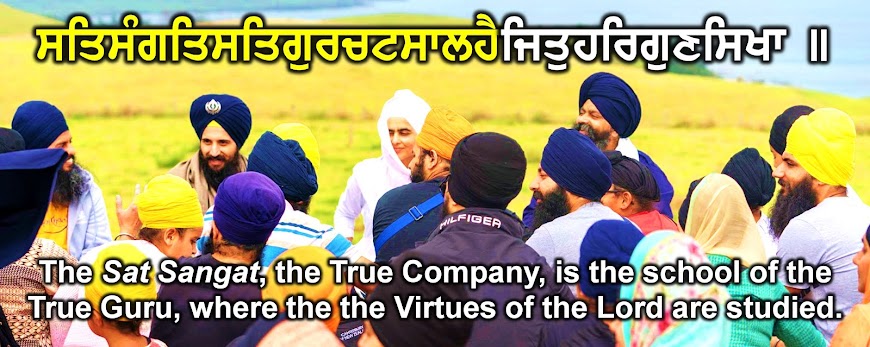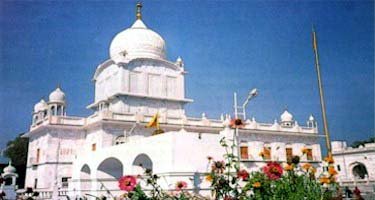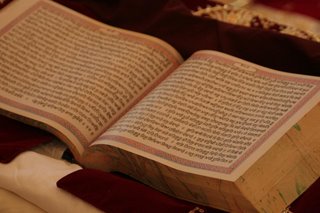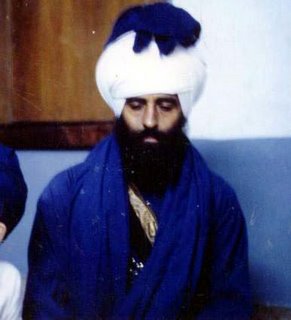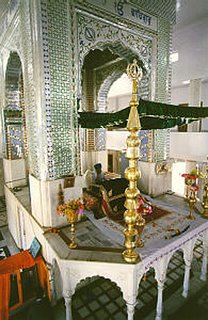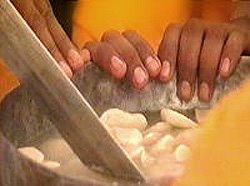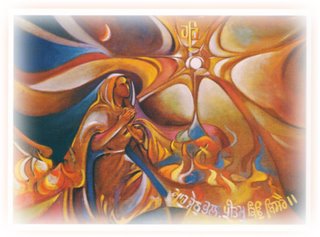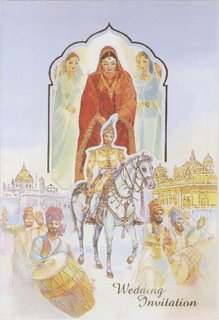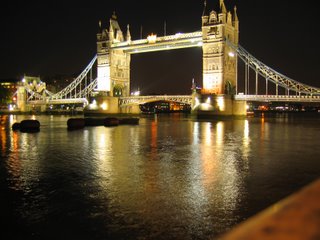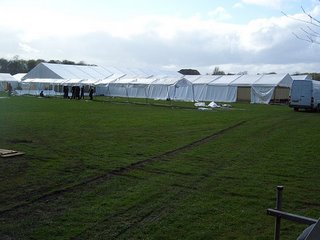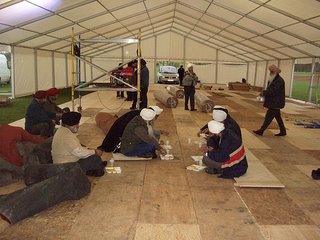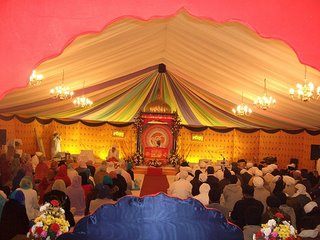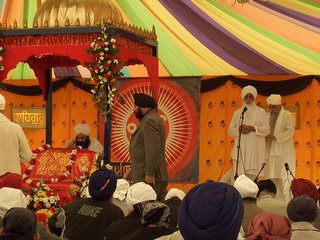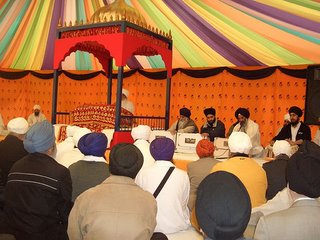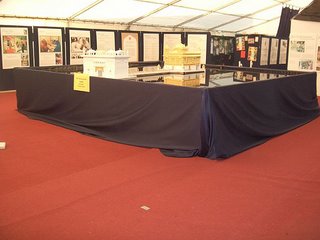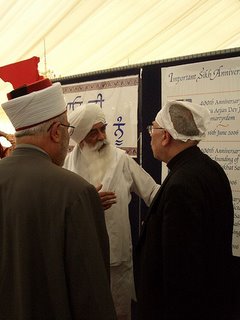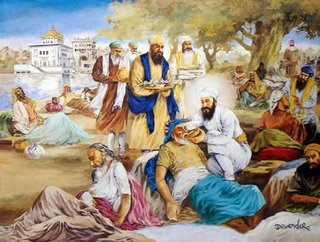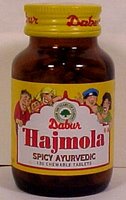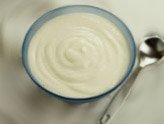bhale amardaas gun tere, teree upmaa tohi ban aavai.
O Guru Amar Daas Ji, Your Glorious Virtues are so sublime; Your Praises belong only to You.
(Ang 1396)
Sariaa Nu Lakh Lakh Vadhaaee Hove on today's Gurpurb. Today is the 527th Parkaash Diwas (Birth Day) of GURU AMAR DAAS SAHIB JI, the 3rd Jyot (Light) of Guru Nanak Sahib Ji, who was born at BASARKE, a small village in Amritsar district in 1479.
A GLIMPSE AT THE LIFE OF GURU AMAR DAAS SAHIB JI SAHIB
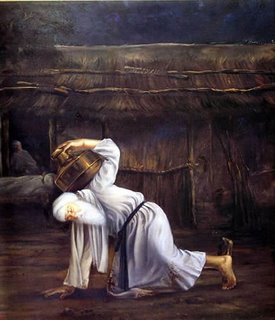
Need of Guru
Baba Amar Daas Sahib Ji was introduced to Path of Gurmat and Naam through Bibi Amro Ji, the daughter in-law of Baba Amar Daas Ji’s younger brother. Bibi Amro Ji was the daughter of the Second Nanak, Guru Angad Dev Sahib Ji. Through HEARING the Divine SHABAD being sung by Bibi Amro Ji, Baba Amar Daas Ji was introduced to the House of Guru Nanak Sahib Ji.
Despite being THIRTY YEARS OLDER, Baba Amar Daas Ji bowed to Guru Angad Dev Ji Sahib. This illustrated that AGE or RELATIONSHIPS (ਰਿਸ਼ਤੇ) have NO RELEVANCE.
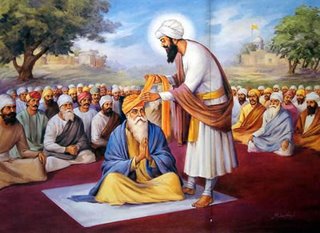
Guruship
Baba Amar Daas Sahib Ji served Guru Angad Dev Sahib Ji with utmost devotion and dedication. Besides fetching water from the river Beas for Guru Sahib's daily bath, he would serve in the Guru Ka Langar. Every year Guru Angad Dev Sahib Ji acknowledged his services by conferring upon him a SIROPA (a robe of honour) which the Great Guru wrapped around his head. Baba Amar Daas Ji was honoured with a Siropa seven times. SEVA (selfless service) is one of the main tenets of the House of Guru Nanak Sahib Ji, exemplified through the lives of the Gurus. Guru Amar Daas Sahib Ji was the OLDEST aged Guru. This illustrated that EVEN THE OLD CAN MAKE CHANGE.
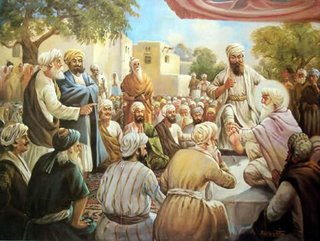
Responding to Hostility with Humility
Bhai Datu Ji, son of Guru Angad Dev Sahib Ji, considered himself to be the claimant of 'Gurgaddi' (the seat of Guruship), which he however could not ascend to. Deeply frustrated, Bhai Datu Ji KICKED Guru Amar Daas Sahib Ji with his foot while Guru Ji was seated on the throne. With a rare display of SWEETNESS and HUMILITY, Guru Sahib kept seated and did not utter a word of anguish. Rather, he grabbed Bhai Datu Ji’s foot and said, “Your foot must have been hurt by my hard bones.” Guru Sahib did not respond with a REACTION rather through displaying his compassion. The Guru showed that each situation requires a UNIQUE RESPONSE depending on the circumstances.
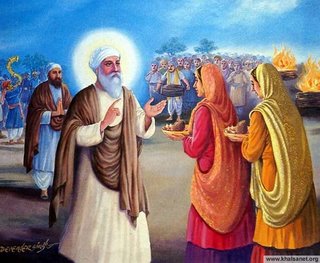
Rejection of Sati and Pardah
The reality of India at the time of the Guru Sahibs was that the author of Ramayan (Hindu mythological epic) had written that “The drum, Shudar (low caste) and woman are to beaten.” Guru Amar Daas Sahib Ji rejected the old age practice and tradition of women BURNING THEMSELVES in the funeral pyres of their husbands and women VEILING their faces. Guru Sahib taught that women are NOT a COMMODITY and implemented SOCIAL CHANGE.
Furthermore, Guru Amar Daas Sahib Ji promoted and propagated that WIDOW REMARRIAGE was acceptable. This was underlined by the principle that every single person is DIVINE (Man Too Jyot Saroop Hai, Apnaa Mool Pachhaan). However, we do not recognise this! Guru Sahib emphasised that why should we WASTE LIFE by committing Sati.

Established Manjees
Guru Sahib POLITICALLY developed the Sikh community. Four Sikh women were appointed as the RELIGIOUS HEADS of Sikh education centres. Districts under the charge of men were known as Manjeeaa(n), from manjee or string-bed. Those in the charge of women were known as PeeReeaa(n), form peehee or sitting-stools on which they sat to minister to the disciples. Their selection for this important task indicated the faith of the Guru in the capacity of women for ORGANISATIONAL WORK.
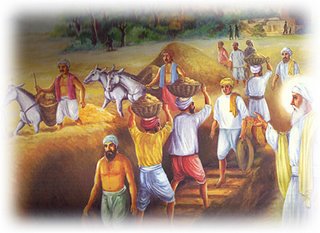
Founded Goindval
Guru Amar Daas Sahib Ji followed the steps of the earlier Gurus in CONSTRUCTING CITIES. This was part of the VISION of the Gurus to broaden the horizons of the Sikh People and show them that Sikhs should not confine themselves to thinking small but to THINK BIG. The Guru Sahibs were FORWARD THINKERS. Realising that the water of the River Beas was becoming not fit for human consumption, (which later become polluted) Guru Amar Daas Sahib Ji constructed a BAOLI (well) at Goindwal Sahib, covering the entire area with trees. This not only provided SAFE DRINKING WATER to the people but also helped to create an ECO-FRIENDLY environment.
Summary
ਗੁਰ ਅਮਰਦਾਸ ਕੀ ਅਕਥ ਕਥਾ ਹੈ ਇਕ ਜੀਹ ਕਛੁ ਕਹੀ ਨ ਜਾਈ ॥
gur amardaas kee akath kathaa hai ik jeeh kachh kahee na jaa-ee.
The Unspoken Speech of Guru Amar Daas Ji cannot be expressed with only one tongue.
(Ang 1406)
Bhai Nand Lal Singh Ji writes in his poetry that if one word could describe and summarise Guru Amar Daas Sahib Ji's life, that word be "EQUALITY."
Bhul Chuk Maaf.
DHAN GURU AMAR DAAS SAHIB JI.
